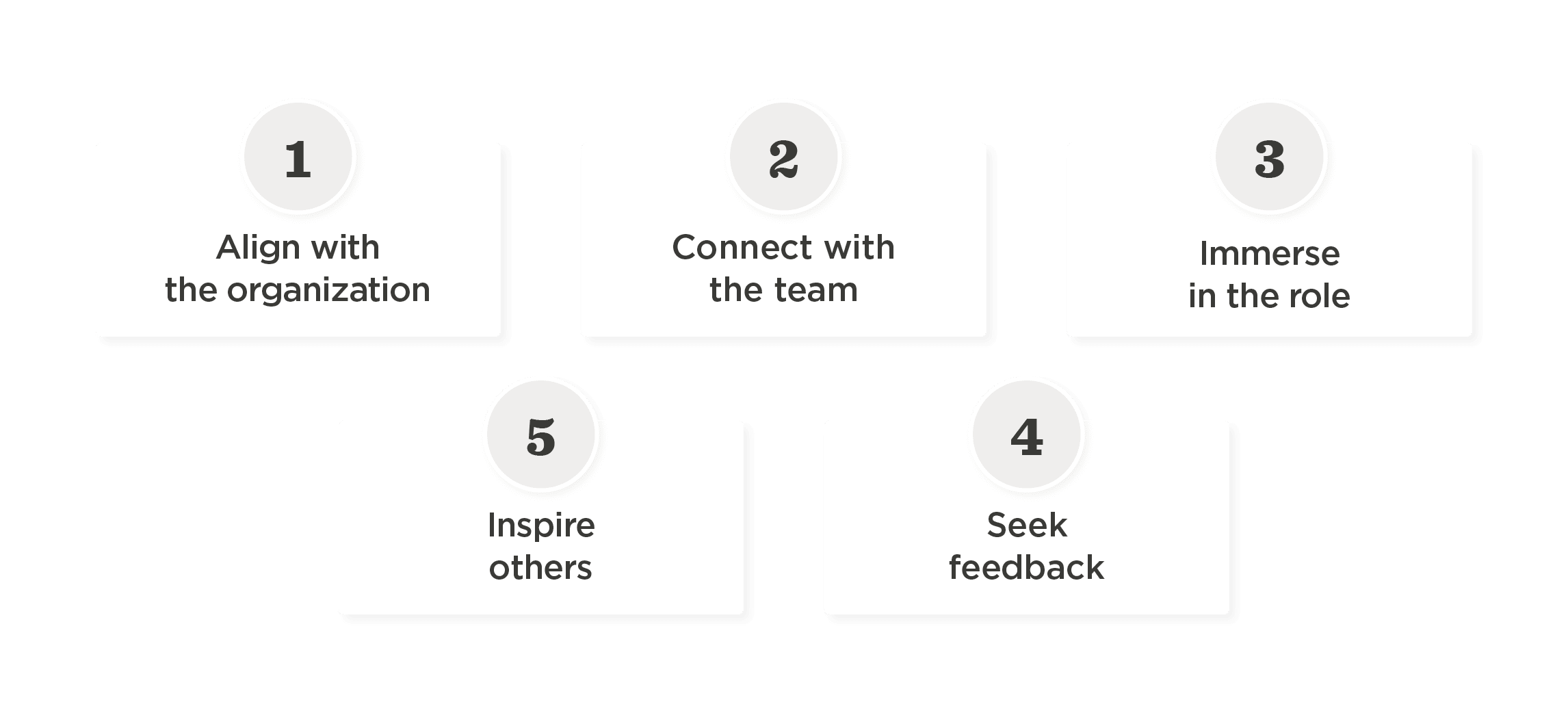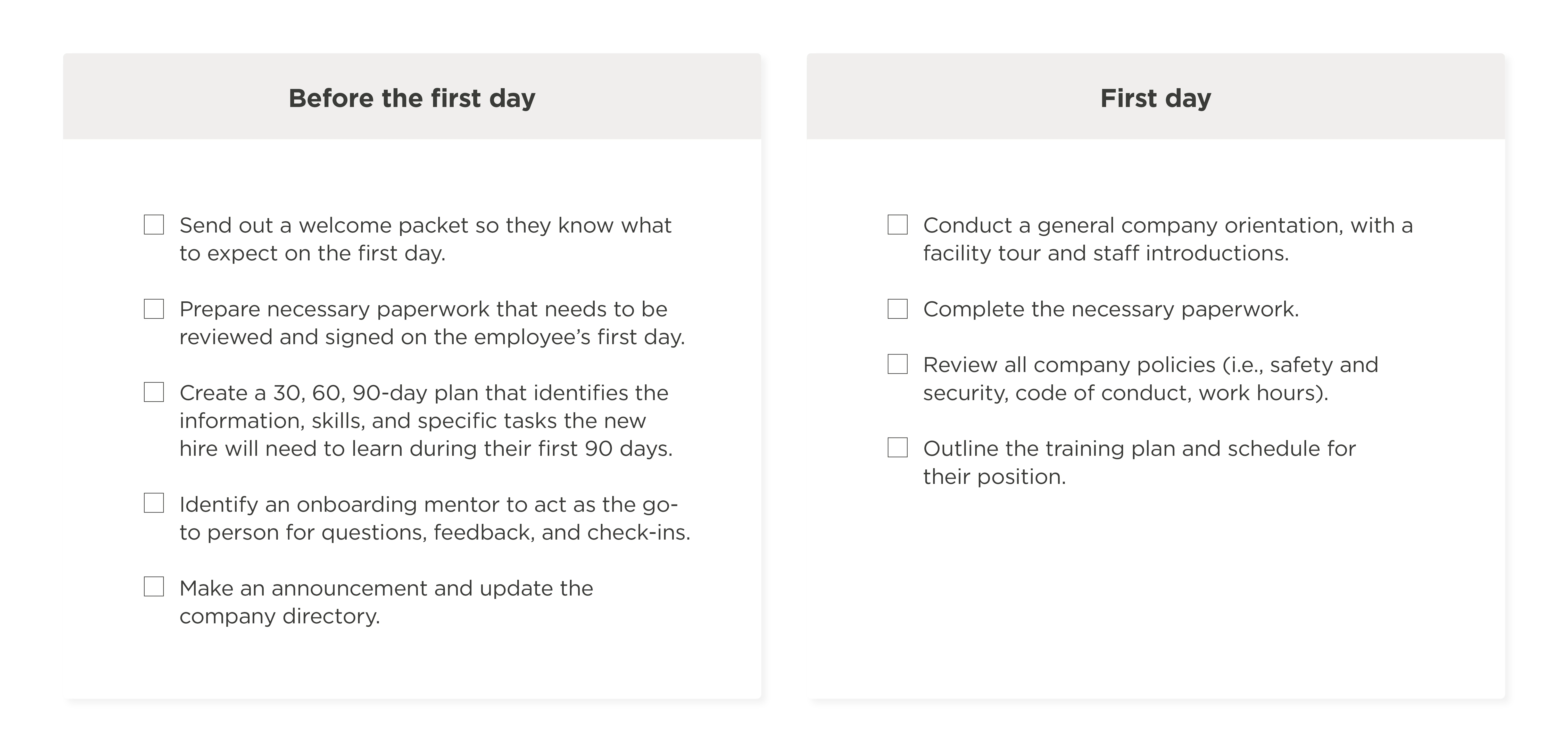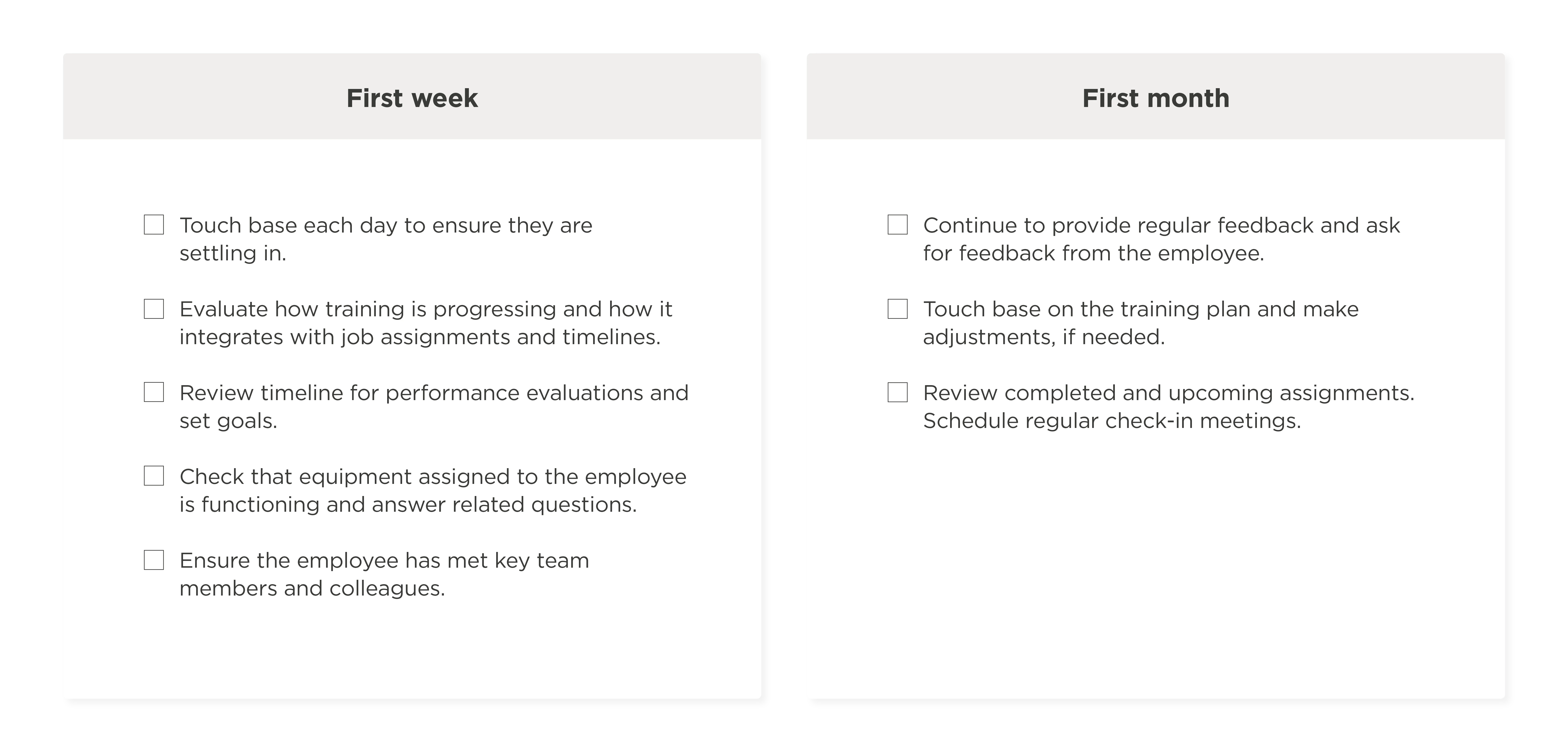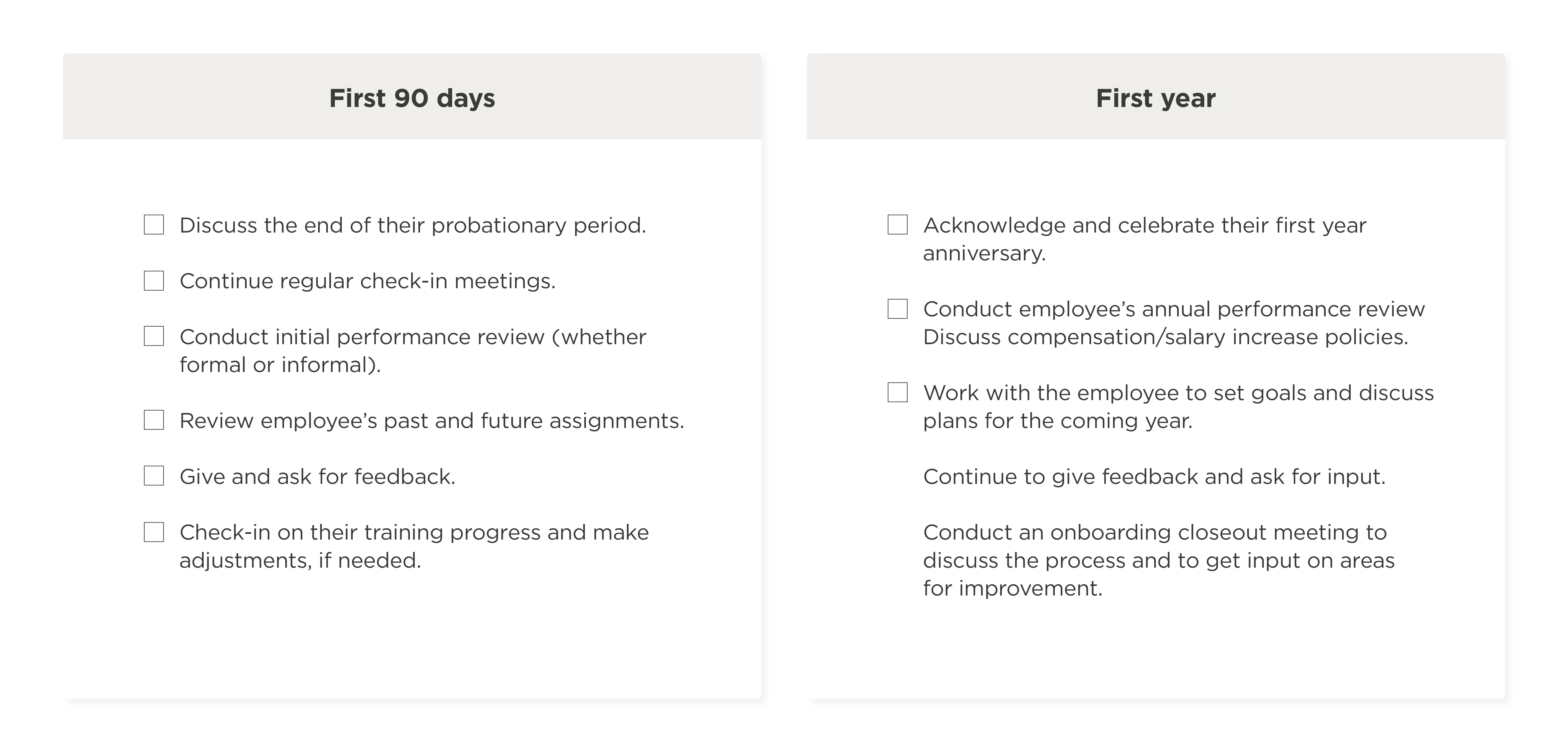We’ve all shown up at someone’s home for a party and wondered, should I knock, ring the bell, or just open the door? Then once you’re inside, you might face the question of whether it’s a “shoes on or off” home. The room is full of people you’ve never met. At that moment, most of us are grateful when the host spots us and warmly welcomes us, shows us where to leave our coat, where to find the food, and even introduces us to a few new people.
Onboarding is the party host. It is how new employees feel welcomed by the organization and gather the necessary knowledge, skills, and behaviors that will help them become effective members of an organization. It’s the part of the employee experience which lays the foundation for everything to come—the employee’s sense of connection with their team, their understanding of their role, and ultimately their performance.
When onboarding is done well, organizations benefit. According to Glassdoor, new hire retention improves by 82% and productivity by over 70% when a strategic approach to onboarding is in place.
Additionally, in a survey done by the Brandon Hall Group, 27% of companies that rated their onboarding processes as being “highly effective” also reported seeing improved revenue, employee engagement, and satisfaction.
Knowing what a significant role onboarding plays in an employee’s future, it’s surprising that only 12% of employees strongly agree their organization does a great job of onboarding new employees. Common complaints about the onboarding process include that organizations are too focused on checking the boxes and completing all the required employment paperwork. Although experts recommend that onboarding should continue for at least 90 days or even 12 months, some organizations limit the process to the first week, or even just the first day, which simply doesn’t allow someone to acclimate to the organization.
Onboarding also suffers when it’s inconsistent across an organization and managers don’t have a standard onboarding process they can follow and implement with their new employees. Without an established process to onboard employees and track their performance, managers often don’t realize that onboarding didn’t go well until it’s too late. Ineffective onboarding often does not come to light until the first performance review or when a new employee chooses to leave. In fact, one-third of new employees begin searching for a new job within the first six months, and 25% leave before being with the company for one year.
How can organizations avoid costly turnover? Knowing the signs of ineffective onboarding and understanding the relationship between onboarding and performance are the first steps. Then, once companies familiarize themselves with the five phases of intentional onboarding, they can evaluate their current processes against these phases to ensure they are onboarding new employees in a thoughtful, structured manner that will set them up for success and maximize results.
Signs of ineffective onboarding
If someone doesn’t feel welcomed when they arrive at a party, chances are they might not stay very long. If they aren’t introduced to people, they may wonder if they’re part of the group. In a short amount of time, they may decide never to come back, or they may leave and go to someone else’s party.
Those are some signs of not feeling welcome to a party, but what are the signs that someone isn’t welcomed or effectively onboarded to an organization?
High turnover: Poor onboarding is a major cause of employee turnover, which can cost a company 100-300% of the employee’s salary. Without adequate information, instruction, and support, employee performance is likely to suffer, and they may experience new hire remorse. In fact, 1 in 5 new hires reports they are unlikely to recommend the employer to a friend or family member due to the initial onboarding experience.
Employee disengagement: Ineffective onboarding often results in a misalignment between the role requirements and employee’s expectations. This misalignment leads to stress and disengagement. A study by Kronos and the Human Capital Institute shows that “onboarding is a critical weakness for a majority of organizations that stalls new hire momentum and threatens to disengage enthusiastic employees during their crucial first weeks on the job.”
Lack of communication: All too often, onboarding processes do not incorporate a clear channel for providing input or asking questions. Providing new employees with formal opportunities to communicate with HR, management, and their team members helps them feel connected to the organization. And employees who experience effective onboarding are 30% more likely to feel firmly integrated into their workplace culture.
Inconsistent process: 36% of HR leaders cite insufficient technology for their inability to automate and better organize onboarding programs. In reality, what most companies call onboarding is actually a data collection session. According to Rosemary Haefner, Chief Human Resources Officer at CareerBuilder, “Employers need to establish a comprehensive checklist for every new employee and incorporate more automation to provide a better, more efficient experience for employees, their managers, and HR.” Further, implementing the tools needed to automate administrative tasks involved in onboarding can help shift the focus from administrative tasks to establishing development programs for employees.

Intentional onboarding benefits everyone
If you’ve been with an organization for a year or more, you may not remember what it’s like to be new. That feeling of not knowing anything is difficult for people. Onboarding doesn’t have to be complex. Part of onboarding can be as simple as providing someone with a list of key terms.
“There’s almost always a litany of cryptic acronyms that company’s use for key processes or roles—decoding them can be one of the most distressing challenges for new hires. The more a new hire has to ask awkwardly, ‘Sorry, I’m new…what does SSRP stand for?’ the more they feel like an outsider. Simple tools, like glossaries of terms, go a long way,” according to Harvard Business Review.
The core purpose of onboarding is to help a new employee make connections to the company, their role, and the people with whom they’ll be working. Intentional onboarding includes a collection of activities that include completing the required paperwork, immersing in the organizational culture, and connecting with peers. Of course, a top priority is to ensure an employee is able to start their job on the first day, with the information and equipment they need available to them. But once those basic “orientation” needs are met, the onboarding process should continue for at least 30 days, and ideally beyond, as longer onboarding programs are associated with stronger talent and business outcomes such as employee engagement, employer reputation, percentage of diverse hires, quality hires, and internal hires and promotions.
Whether it’s regular meetings with a manager, mentor, or buddy, onboarding should include a standard process that builds trust and provides the new hire with the resources they need to answer questions and feel supported in their new role. A good onboarding process requires work but will make people feel welcome and part of the company quickly and effectively.

HR tech supports effective onboarding
An HR Information System (HRIS) can help HR managers onboard employees efficiently and provide a consistent experience. An HRIS can streamline the administrative aspects of the process and make it easier for new hires to access all the tools and resources needed for their job function. As much as possible, organizations should use automation for paperwork completion so managers can focus on the human element of the new hire experience.
With an HRIS that drives culture and engagement, recruiters and hiring managers can streamline the initial process of getting a new employee into the system and approved for employment. They can also ensure that new hires receive a warm welcome email or video message, as well as the information required for their first day.
Once someone is in the HRIS, the training platform can be leveraged to auto-assign learning content such as new employee orientation or a module about how to use internal systems, for example. Likewise, new employees should have access to online resources, guides, and organizational charts, which will allow them to find the answers they need. Thanks to data reporting in the HRIS, managers can track the support employees receive and follow up accordingly.
How does onboarding tie to culture and performance?
If you want to retain employees and want them to perform to their highest ability, the investment in onboarding is worth it. Many times, companies learn about bad onboarding during the employee’s first performance review, when they realize that performance issues are due to a lack of clarity with roles and expectations.
“In my experience as a consultant for Fortune 500 companies, I’ve found that the most effective organizations onboard new hires for the duration of their first year — their most vulnerable period — and focus on three key dimensions: the organizational, the technical, and the social. By using this integrated approach, they enable their employees to stay, and to thrive,” according to Ron Carucci in Harvard Business Review. This approach is supported by the fact that it typically takes eight months for a newly hired employee to reach full productivity.

Performance is the execution of an action—it’s how an employee completes job tasks. Each job has a set of requirements—knowledge, skills, and abilities—which someone must possess to perform well. Even if someone possesses all of those, they need onboarding to realize their potential and perform for your organization.
When people get all this through onboarding, they’re more likely to stay. Companies that focus on onboarding retain 50% more new employees than those that do not prioritize the onboarding process. And 69% of employees who have a positive onboarding experience are more likely to remain with the employer for three years.
“New hires who experience badly planned and executed initiations may conclude that the organization is poorly managed and decide that it was a mistake to take the job. Under uncertain circumstances, new employees are prone to jump to premature conclusions. As they make their way through the organization, those early experiences get magnified and calcified,” according to the Society for Human Resource Management.
To establish an onboarding process that is effective and intentional, you’ll want to take the time to come up with a detailed plan that makes sure it addresses these five key phases.
5 Phases of intentional onboarding

- Align with the organization: The first step for onboarding a new employee is to align them with the organization. You need to capture their pay, benefits, and other employment details. In the early days of employment, it’s also vital to engage with them regarding your mission and values.
- Connect with the team: Assigning mentors, peer mentors, and identifying team members they can go to for assistance will help integrate new hires. These individuals can provide guidance and ongoing support, as well as positive feedback as the employee gets up to speed.
- Immerse in the role: With the tools and resources they need and a clear job description and expectations, new hires can immerse themselves in their role. This immersion allows them to get up to speed quickly and start feeling like a contributing member of the organization who is helping drive results.
- Seek feedback: Successful onboarding software integrates feedback into the process. Leveraging technology that enables new employees to provide input easily will help companies understand the effectiveness of the onboarding process and identify areas that need improvement.
- Inspire others: All the effort that goes into onboarding a new employee will eventually pay off when they’re eager to help onboard and inspire the next new person. One positive onboarding experience has the potential to drive endless inspiring experiences throughout your organization.
Checklist: the first 365 days
When you consider that effective onboarding can take 365 days, and sometimes more, it can be overwhelming. Every organization is unique, and your onboarding should reflect that. But, based on best practices in onboarding, there are tasks and objectives your onboarding should include. Below we’ve provided a checklist to help you implement your program based on the first 365 days after someone has joined your organization.



Again, this may seem like a long list. But, it has been shown that standardized onboarding creates results in a 50% increase in productivity.
Recommended For Further Reading
Conclusion
It is well worth it for organizations to invest the time and prioritize an intentional, standardized onboarding process. Focusing on successful onboarding leads to better employee retention and higher levels of engagement, which all makes for a stronger company culture. Intentional onboarding can take the overwhelm out of a new job for employees, managers, and HR teams. HR leaders who use the power of technology to support the process can configure it so that it’s easy to administer, as well as assess for gaps and update based on what the data reveals.
Creating an onboarding strategy should be a process that starts with looking at what new employees need most, how the organization can support managers in delivering a great experience, and using data to continue connecting with your workforce—from day one.
Meet Bob
Onboarding is critical. Here are some of the ways HiBob’s enhanced platform can help you onboard new people, re-engage current people, and attract better people by putting your organization’s culture front and center:
- Automated onboarding workflows
- Automated onboarding task lists
- Collaboration tools
- Surveys
- Checklists
- Behavioral assessments
- Appreciation tools
